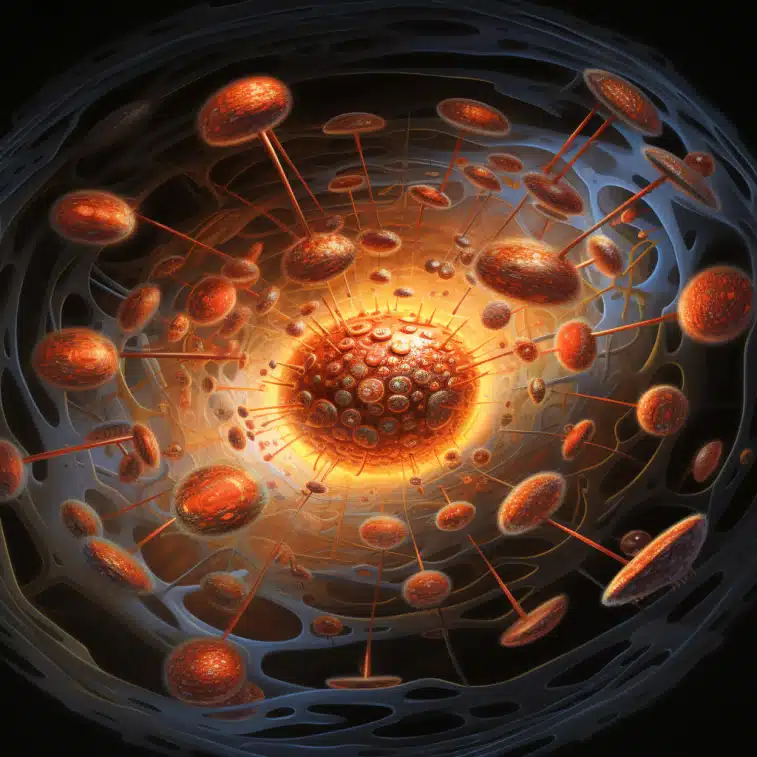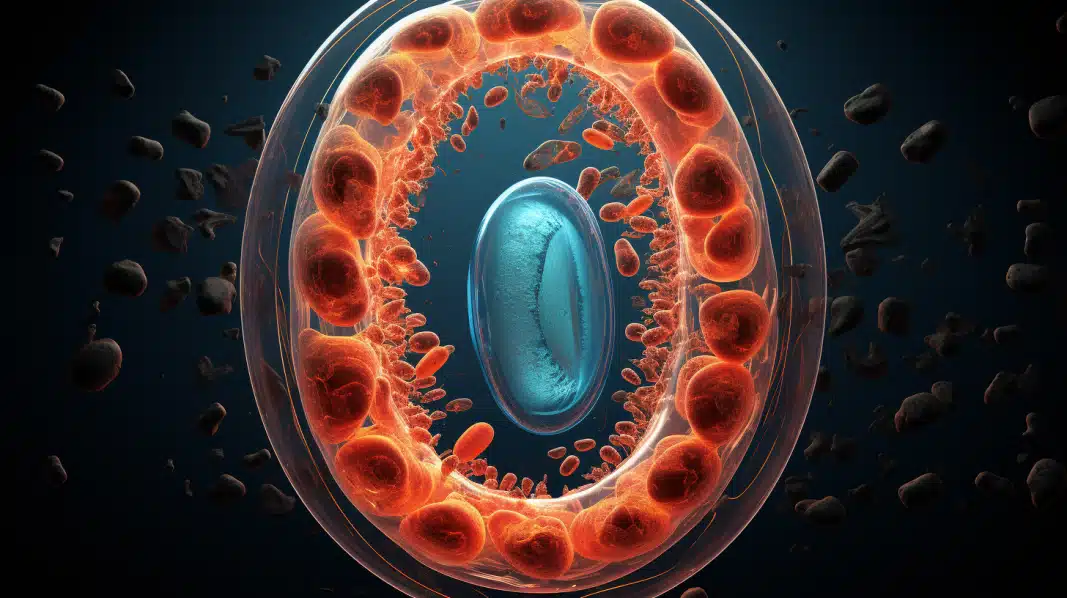A new Mayo Clinic study is the first to clinically investigate whether antidepressants that impact mitochondrial function differently are associated with varying rates of treatment-emergent mania in bipolar disorder.
The study found that antidepressants that increase mitochondrial energetics were associated with nearly double the rates of treatment-emergent mania compared to antidepressants that decrease mitochondrial energetics.
Key Facts:
- Antidepressants that increase mitochondrial electron transport chain activity had higher rates of treatment-emergent mania (24.7%) compared to antidepressants that decrease electron transport chain activity (13.5%).
- The risk of treatment-emergent mania with antidepressants that increase mitochondrial energetics was more than double the risk with antidepressants that decrease mitochondrial energetics, even when adjusting for confounding factors like age, sex, and bipolar subtype.
- Preclinical studies show that some antidepressants like bupropion, nortriptyline, paroxetine and venlafaxine increase electron transport chain activity and mitochondrial respiration.
- Other antidepressants like amitriptyline and escitalopram have been shown to decrease electron transport chain activity and mitochondrial respiration in rodent studies.
Source: Mol Psychiatry (2023)
Mitochondrial Dysfunction May Underlie Risk of Mood Switch with Antidepressants
Bipolar disorder has long been associated with mitochondrial dysfunction, specifically in the electron transport chain (ETC) which is responsible for creating energy in the form of ATP.
Impairments in ETC efficiency and overall ATP production likely contribute substantially to the pathophysiology and recurring cycles of mania and depression characteristic of the disorder.
Researchers have hypothesized that the additional stimulation of mitochondrial energetics with specific antidepressants may push vulnerable bipolar patients over the threshold, triggering a switch from depression into mania.
A new study provides some initial clinical evidence to support that hypothesis.
By categorizing antidepressants based on their impact to mitochondrial energetics in preclinical studies, the researchers found double the rates of treatment-emergent mania with drugs that enhance mitochondrial respiration.
- Bupropion, nortriptyline, paroxetine and venlafaxine were classified as antidepressants that increase mitochondrial activity (Mito+)
- Amitriptyline and escitalopram were classified as antidepressants that decrease mitochondrial activity (Mito-)
Rates of Treatment-Emergent Mania Were Significantly Higher with Mito+ Antidepressants
The study analyzed data on 889 patients from the Mayo Clinic Bipolar Disorder Biobank who had a documented history of exposure to the selected antidepressants as well as clinician-assessed data on whether treatment-emergent mania occurred.
Out of the total sample:
- 600 patients took Mito+ antidepressants: 176 patients (24.7%) experienced treatment-emergent mania
- 289 patients took Mito- antidepressants: 39 patients (13.5%) experienced treatment-emergent mania
After adjusting for potential confounding factors like age, sex, and bipolar subtype, the odds of treatment-emergent mania were 2.21 times higher for patients taking antidepressants that enhance mitochondrial activity compared to those taking antidepressants that reduce mitochondrial activity.
While retrospective studies have limitations, the substantially higher rates of switching with Mito+ drugs in this initial clinical investigation warrant further research into the role of mitochondria in antidepressant-induced mania.
Why Do Antidepressants Increase Mitochondrial Function?

The mechanisms by which antidepressants impact mitochondrial activity are not yet fully characterized.
However, preclinical studies indicate there may be a biphasic response:
- In early, acute antidepressant administration (up to 4 weeks), animal studies show an upregulation of mitochondrial respiration and electron transport chain function. This aligns with hypothesized mechanisms of early rapid improvements in energy, motivation, concentration, etc. with antidepressant medications.
- In more chronic administration (> 4 weeks), studies show mitochondrial activity is either unchanged or decreased compared to controls. This may coincide with full achievement of therapeutic benefits in depression.
For patients vulnerable to switching, the early boost in mitochondrial activity with some antidepressants could help trigger the shift into mania.
This can manifest as heightened energy, impulsivity, agitation, racing thoughts, irritability, less need for sleep, etc.
Chronic administration may avoid this risk but requires further study.
Additionally, different cell types in the body (ex: neurons vs immune cells) may respond differently to antidepressants in terms of mitochondrial impacts.
Clinical Insights on Specific Antidepressants and Treatment-Emergent Mania Risk
The heightened rates of treatment-emergent mania in this study with the Mito+ drugs bupropion, paroxetine, and venlafaxine align with prior clinical research showing increased mood switch risk with those medications.
- Venlafaxine is perhaps the best studied in this regard, with higher documented rates of treatment-emergent mania compared to other antidepressants
- Paroxetine has also demonstrated moderately heightened propensity for treatment-emergent mania in past analyses
- Less data exists with bupropion to strongly support increased risk, but mitochondrial impacts may provide a biologically plausible mechanism
On the other side, escitalopram was one of the antidepressants preclinically shown to reduce mitochondrial activity.
Rates of treatment-emergent mania were lowest amongst study participants taking that medication.
However, amitriptyline also reduces mitochondrial activity yet mood switch rates were slightly higher.
Ultimately larger clinical studies on specific drugs are still needed, but categorizing antidepressants based on mitochondrial activity in addition to standard drug classes appears a promising avenue for better personalized medicine in bipolar disorder.
Mitochondria & Bipolar: a Complex Interplay of Genetic Risk, Environmental Factors, and Life Events
Mitochondria do not function in isolation, but rather constantly interact with the intracellular environment.
As such, genetic risk factors for bipolar disorder interact in complex ways with environmental influences known to impact mitochondrial health:
- Early life trauma
- Chronic stress
- Poor dietary habits
- Lack of exercise
- Obesity
- Smoking
- Substance abuse
- Certain medications
The interplay between these factors, altered mitochondrial activity, and risk of mood episodes is an area of increasing research focus in bipolar disorder.
Additionally, lithium – one of the most effective bipolar medications – has actually been shown to increase activity of mitochondria’s ETC Complex I.
This interesting contrast to antidepressant effects highlights how thoroughly elucidating mitochondrial mechanisms in bipolar will take substantial further work.
Further Research on Mitochondrial Effect of Antidepressants Needed
While an initial step, this study’s limitations as a retrospective analysis mean follow up prospective clinical trials are essential. Key next directions should focus on:
- Cataloging effects of specific bipolar disorder medications on mitochondrial parameters at various stages of treatment
- Pairing clinical mood data with repeated measurements of mitochondrial respiration rates and electron transport chain activity
- Multi-center trials that can collect larger sample sizes
- Analysis of potential mitochondrial genetic risk factors and their interaction with medication response
Takeaway: Antidepressants May Trigger Mania via Mitochondria
This innovative study provides some initial clinical evidence that the way antidepressants influence mitochondrial energetics could affect propensity for treatment-emergent mania in certain bipolar patients.
The substantial data on mitochondrial dysfunction as an underlying mechanism in bipolar highlights why a deeper understanding of these organelles is critical.
Findings open the door for categorizing antidepressants along parameters beyond just standard drug classes to improve personalized medicine.
Replication in larger prospective trials is essential to crystallize mitochondria’s role.
But identifying biological subtypes of illness linked to medication response would transform treatment of this chronic, recurring condition that too often eludes effective prophylaxis.
References
- Study: Antidepressants that increase mitochondrial energetics may elevate risk of treatment-emergent mania
- Authors: Manuel Gardea-Resendez et al. (2023)







